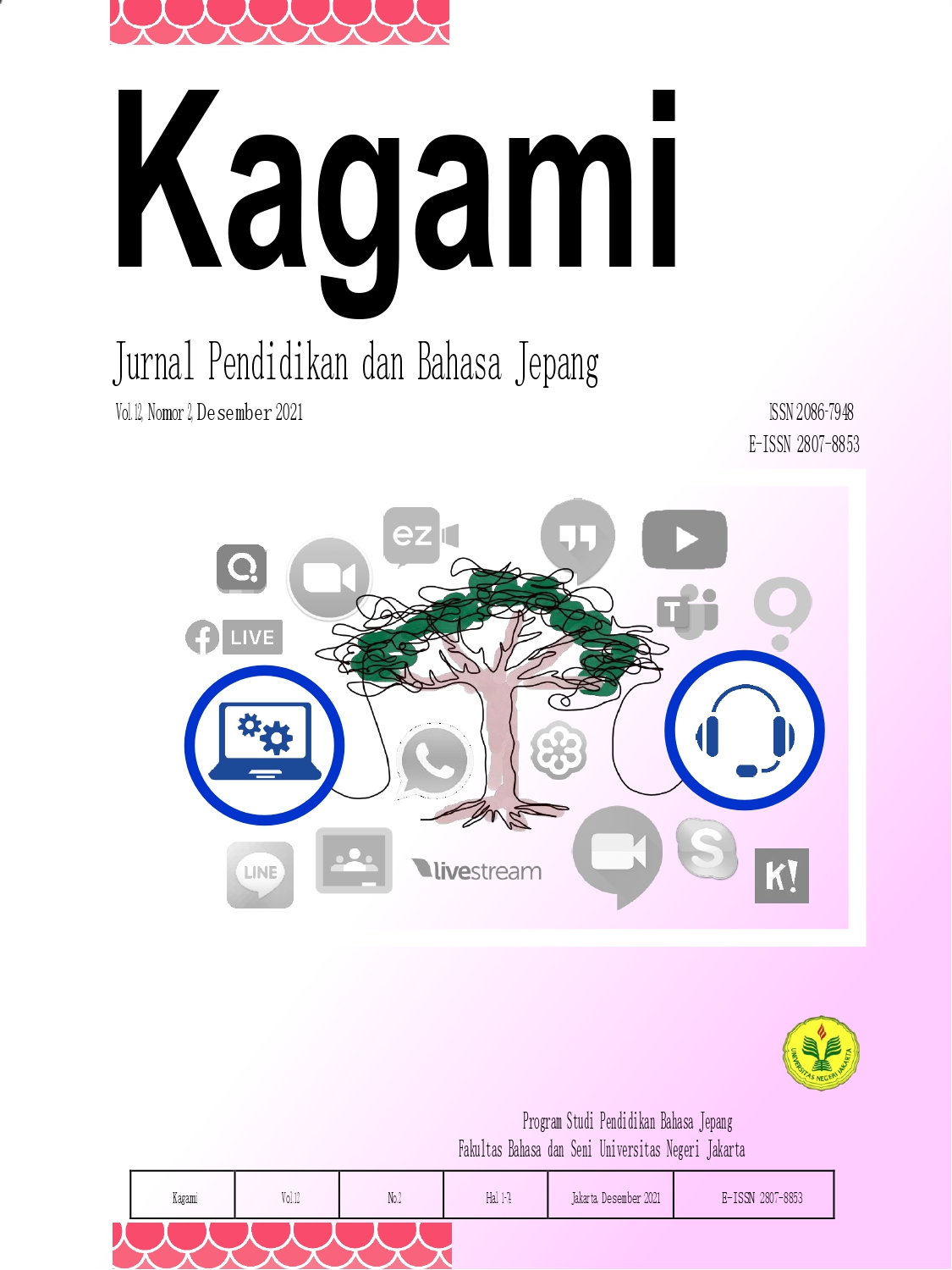ANALISIS KEBUTUHAN BAHAN AJAR KANJI TINGKAT PEMULA BERBASIS KETERAMPILAN ABAD 21 DENGAN MODEL SPD
Keywords:
learning material, kanji, SPD modelAbstract
The purpose of this research is to obtain the information needed so that it can describe the need for preparation of Kanji teaching materials at the beginner level based on 21st century skills for students of the Japanese Language Education Study Program FBS UNJ. This research is an exploratory descriptive study with the See, Plan, Do (SPD) model. The sample in this study was the first semester students of PSPBJ consisting of 79 peoples. This study will explain the needs of students and lecturers for kanji textbooks at the beginner level based on 21st century skills. The kanji textbooks in the Japanese Language Education Study Program UNJ are quite good in terms of appearance and content. However, students and lecturers expect more practice, especially writing exercises, so that there will be more opportunities to use kanji in sentences and discourse. Based on the situation analysis that has been done, it is necessary to have a plan to arrange kanji exercises in the form of a website or digital so that students can access them anywhere and anytime easily. This exercise is packaged in various types of questions and will present games or games so that students feel motivated to practice kanji.
References
Chieko, K. (2001). Basic Kanji Book Volume 1 (3rd ed.). Bonjinsha.
Haristiani, N., & Firmansyah, D. B. (2017). Android application for enhancing Japanese JLPT N5 kanji ability. Journal of Engineering Science and Technology, 12(Special Issue 10), 106–114.
Kocimaheni, A. (2018). SILK as Kanji Learning Model for Students at Japanese Department. 108(SoSHEC 2017), 223–226. https://doi.org/10.2991/soshec-17.2018.44
Millah, E. (2012). Pengembangan Buku Ajar Materi Bioteklogi Di Kelas XII SMA Ipiems Surabaya Berorientasi Sains, Teknologi, Lingkungan, Dan Masyarakat (Sets). BioEdu, 1(1), 241269.
Oktarinah, O., Wiyono, K., & zulherman, zulherman. (2016). Pengembangan Bahan Ajar Berbasis Model Pembelajaran Proyek Materi Alat-Alat Optik Untuk Kelas X Sma. Jurnal Inovasi Dan Pembelajaran Fisika, 3(1), 80-85–85. https://doi.org/10.36706/jipf.v3i1.3433
Setiawati, N. (2018). Efektivitas Model Pembelajaran Terhadap Keterampilan Membaca Kanji. PARAMETER: Jurnal Pendidikan Universitas Negeri Jakarta, 30(1), 46–58. https://doi.org/10.21009/parameter.301.05
Setiawati, N. (2020). Pembelajaran Kanji Ii Di Masa Pandemi Covid-19 Dengan Bantuan Media Edmodo. 9(November), 13–27.
Shimada, N., shibahara, T. (2008). Kyouzai Kaihatsu. Hituzi.
Sungkono, S. (2009). Pengembangan Dan Pemanfaatan Bahan Ajar Modul Dalam Proses Pembelajaran. Majalah Ilmiah Pembelajaran, 5(1).
Susanto, H. (2013). Teknik Penyusunan Buku Ajar. Penyusunan Buku Ajar, 16.
Visiaty, A., & Yulianti, V. (2013). Strategi Pembelajaran Kanji : Studi Kasus pada Pembelajar Bahasa Jepang Tingkat Pemula dan Menengah di Universitas Al Azhar Indonesia. JURNAL Al-AZHAR INDONESIA SERI HUMANIORA, 2(1), 46. https://doi.org/10.36722/sh.v2i1.116
千恵子加納. (2017). 漢字圏学習者と非漢字圏学習者のための漢字学習と評価の方法. Jsl漢字学習研究会誌, 9, 1–10.





